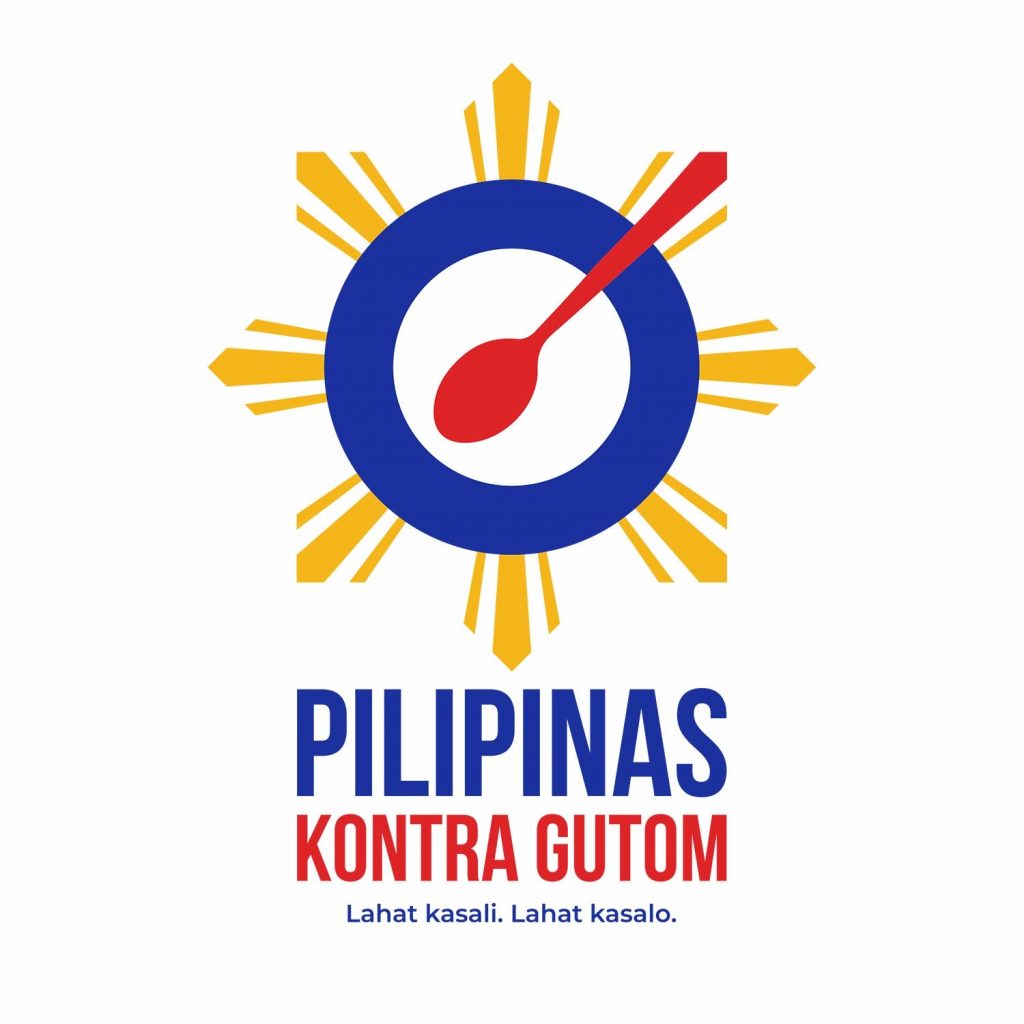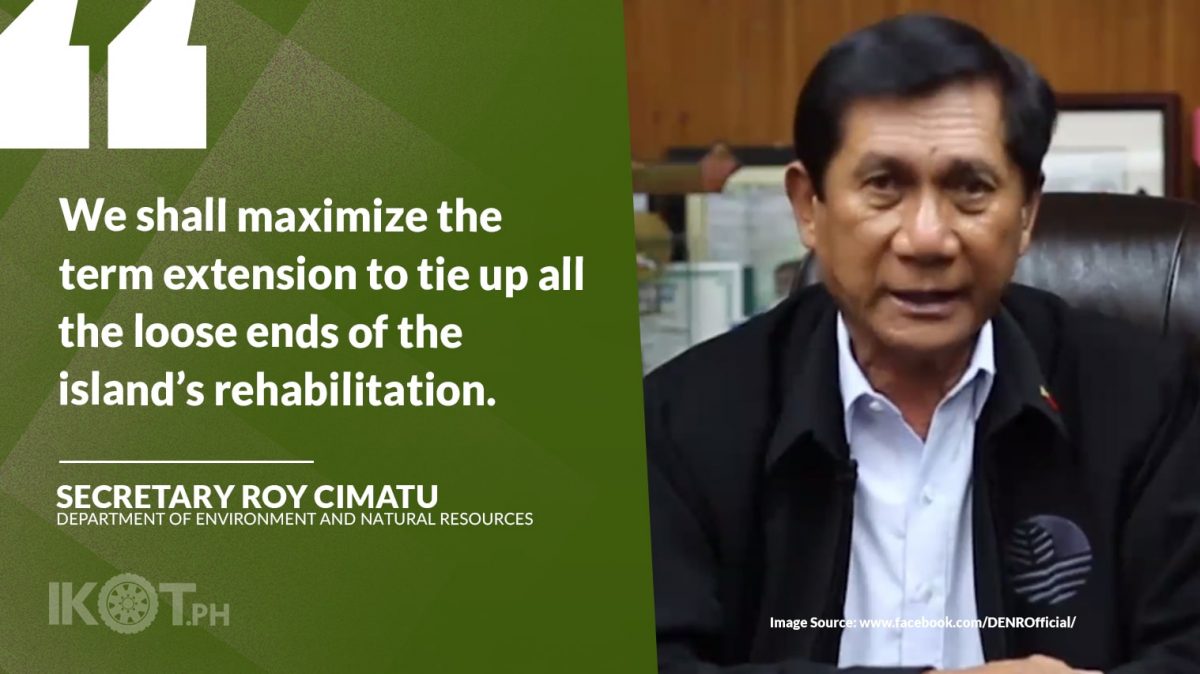The Department of Environment and Natural Resources (DENR) welcomed the term extension of the Boracay Inter-Agency Task Force (BIATF) until June 30, 2022, through Executive Order (EO) 147 signed by President Rodrigo Duterte.
“We thank the President for his trust and confidence in the task force. We shall maximize this term extension to tie up all the loose ends of the island’s rehabilitation. This is our commitment to the Filipino people,” said DENR Secretary and BIATF Chair Roy Cimatu.
The task force, co-chaired by the Department of Tourism and the Department of the Interior and Local Government, was created on May 8, 2018, under Executive Order (EO) No. 53.
The BIATF term was supposed to end in 2020, two years after its creation.
Duterte issued EO No. 115 on May 11, 2020, extending the term of the BIATF until May 8, 2021.
Last March 2021, the BIATF asked the President to extend its term anew “to allow the task force to complete all its projects that have been stalled by the pandemic”.
“The extension is an opportune time to monitor and assess the finished portions of the ongoing rehabilitation to ensure that these not only meet standards but are sustainable as well,” Cimatu said.
“A Boracay Island brought back to its pristine state is the best legacy the task force can leave behind.”
“A Boracay Island brought back to its pristine state is the best legacy the task force can leave behind,” the environment chief pointed out.
The environment head presented several accomplishments of the BIATF during the President’s Talk to the People recently.
He reported that 273 out of 339 structures encroaching the 25+5 easement in the foreshore area were demolished as of July 2021.
Using ground-penetrating radar, the DENR’s Mines and Geosciences Bureau (MGB) also discovered buried illegal pipes that have been discharging wastewater into the beach.
Moreover, the BIATF has carried out the expansion of septage and sewerage facilities.
Cimatu said that individual sewage treatment plants (STPs) for establishments with 50
rooms and above have been constructed, and the outfall pipe system has also been upgraded.
In particular, the capacity of the STP located in Barangay Yapak was increased to 2,500 cubic meters per day.
He said a total of 428 establishments and households were also connected to sewer lines and 88 STPs were installed.
Meanwhile, establishments that were non-compliant with the Clean Water Act and other environmental laws were immediately closed.
“All the beaches in the island have been classified as Class SB water making these waters suitable for swimming, diving, and other water recreational activities.”
Through the DENR-Environmental Management Bureau, the regular collection and analysis of water samples from beaches, wetlands, and outfalls have been conducted.
Cimatu pointed out that except for the Tulubhan outfall, all the beaches in the island, including the White Beach and Bolabog Beach, have been classified as Class SB water, making these waters suitable for swimming, diving, and other water recreational activities.
The Tulubhan area, which is located on the Sibuyan Sea side of the island and is populated by residential houses, is not yet connected to the sewer network.
However, the BIATF is expecting that the completion of the Tourism Infrastructure and Enterprise Zone Authority’s (TIEZA) drainage improvement project in the area by the end of 2022 will mitigate the problem.
“For the Boracay Circumferential Road, Phases 1 and 2 of the projects were completed along with two circumferential road improvements equivalent to 8.75 kilometers of paved and widened road,” he said.
Through the Handog Titulo Program of the Department of Agrarian Reform, certificates of land ownership award were distributed to the island’s Ati tribe in 2018, following the pronouncement of the President during the island’s rehabilitation that the entire island will be declared as a land reform area.
In addition, 33 illegal settler families from Wetland 6 were relocated as agrarian reform beneficiaries.
“To regain and rehabilitate lost wetlands in the island, the local government of Boracay and the private sector have partnered for the preservation, development, and management of the ecosystem,” Cimatu said.
As such, Wetland No. 2 was adopted by the Energy Development Corp; Wetland No. 3 by San Miguel Corporation; Wetland No. 4 by Aboitiz Equity Ventures, Inc. and Aboitiz Foundation, Inc., Wetland No. 6 by Boracay Tubi Systems, and Wetland No. 8 by JG Summit Petrochemical Corp.
Likewise, during the six-month closure of the island that started in April 2018, the Department of Social Welfare and Development and Department of Labor and Employment provided livelihood and financial support through more than 50 technical assistance and training to at least 4,000 participants.
A total of P500-million worth of financial assistance and grants were given to 22,740 affected workers, vulnerable sectors, and beneficiaries while P39-million worth of financing and loan assistance were provided to affected farmers and fisherfolk.


